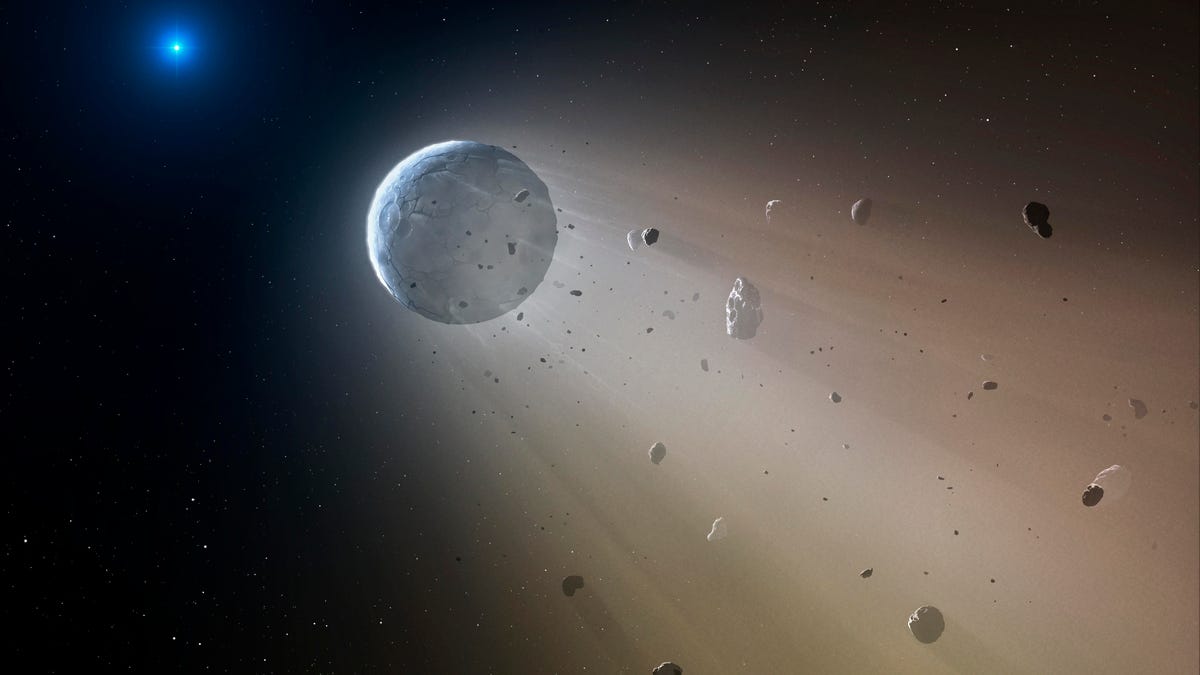Interstellar object may be headed our way
Oumuamua was the first known object to visit from beyond the solar system. Now another may be inbound, but this time it's been spotted ahead of time.

We may be getting a visit from a comet from beyond the solar system for the first time, at least that we've noticed.
A comet first spotted by a Ukrainian amateur astronomer looks to be just the second known object to visit our cosmic neighborhood from beyond the solar system. What could be an even bigger deal is that this one's been discovered as it's still approaching us.
Before you freak out, no, there doesn't appear to be any risk that the comet will collide with Earth.
The comet was found by Gennady Borisov of the Crimean Astrophysical Observatory on Aug. 30, and went by the temporary name GB00234 until Wednesday. After being watched by several other observatories over the past few weeks, it was given the official name of C/2019 Q4 (Borisov) by the Minor Planet Center.
Here's a remarkable animation of #gb00234, which may be our second known interstellar visitor, taken by astronomer Gennady Borisov - who discovered the object.
— Jonathan O’Callaghan (@Astro_Jonny) September 11, 2019
2l/Borisov, perhaps?
(source: https://t.co/vkYXrK6KBC) pic.twitter.com/WObsGj3HJH
From the start, the orbit of the comet seemed unusual. It appeared to follow a so-called hyperbolic trajectory, which means it doesn't orbit the sun and probably originates from far beyond our solar system.
At this point, scientists are certain that this comet exists and is traveling through our solar system. However, its orbit and interstellar status are little bit less certain.
"We are now working on getting more observations of this unusual object," Marco Micheli, of the European Space Agency's Near-Earth Object Coordination Center, said in a blog post. "We need to wait a few days to really pin down its origin with observations that will either prove the current thesis that it is interstellar, or perhaps drastically change our understanding."
A few more diagrams of gb00234. Realize these assume the nominal hyperbolic trajectory is correct. This has yet to be confirmed. The animation is showing a view of the Sun from the comet +/- 120 years.
— Tony Dunn (@tony873004) September 11, 2019
Here's a sim showing where in our sky it came from.https://t.co/m8MHalo1Qw pic.twitter.com/xZUHizVYNe
There could be a little bit of a wait to get new, high-quality observations of C/2019 Q4, as it's going to be blocked by the sun for the next few weeks. October could turn out to be a month when we start to learn much more about this comet and where it's been.
It's very reminiscent of Oumuamua, which appeared to drop in through the roof of our solar system, make a quick pass by the sun and then head back out to who knows where.
Unfortunately, Oumuamua was discovered after it'd already whipped around the sun and was whizzing away from us.
This comet is still inbound, and won't reach perihelion (its closest pass by the sun) until Dec. 10. Hopefully that'll give scientists ample time to study it, a luxury we didn't have with Oumuamua.
Originally published Sept. 11.
Update, Sept 12, 9:30 a.m. PT. Adds comment from ESA.

